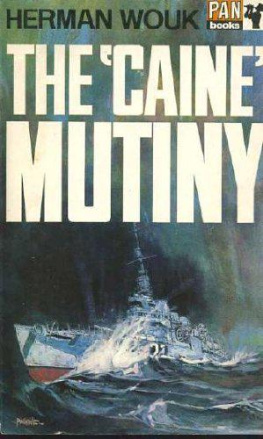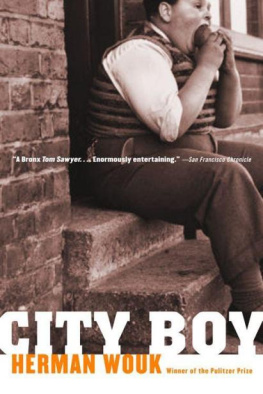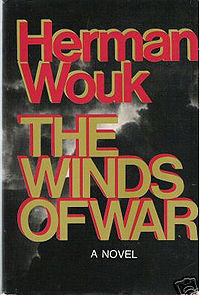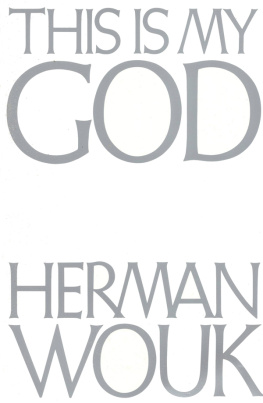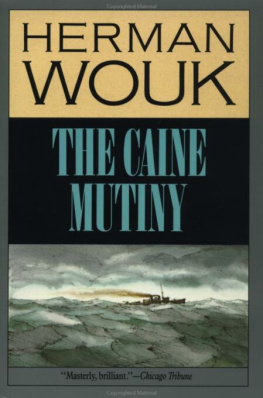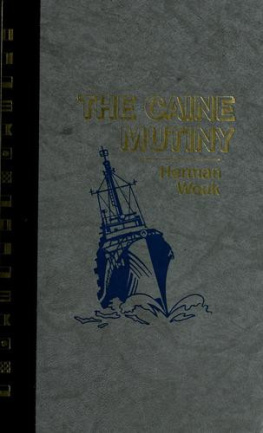The Will
to Live On
THIS IS OUR HERITAGE

For my grandchildren
Stephanie Barak Zohar
with love

Teach these things diligently to your children.
M OSES , D EUTERONOMY 6:7
CONTENTS
Now my hand slows. The task needed an Ezra, and it found only this poor pen. I have done the best I could to tell my brothers that our law of Moses is great and honorable, now as when it first came to us.
This is my God, and I will praise him; the God of my father, and I will exalt him.
S o reads the last page of a book I wrote forty years ago. At the time I was something of a freak in American literary circles: a youngish novelist and playwright, subject of a Time cover story, who kept kosher, observed the Sabbath, and studied the Talmud. I wrote This Is My God more or less to explain myself. By then I had published The Caine Mutiny, in which a Jewish lawyer expressed nonconformist views on the military, and Marjorie Morningstar, a controversial novel about New York Jewish life. So my book was bound to attract some attention. To my genuine and gratified surprise, it became a truly popular long-lived work, still read nowadays. There was evidently a need which the book met.
Decade after decade since then, I have been writing afterwords and epilogues to successive editions, trying to keep abreast of the earthquake shocks in Jewish current events. That expedient has run out. For a long time I have sensed that another very different book is called for, to deal with our apocalyptic twentieth-century experiencesthe reborn Jewish State, the prodigious yet precarious American diaspora, and the deepening religious schisms, and overshadowing all, the German massacre of Europes Jews, called the Holocaust. The Torah and the Talmud are timeless, so in that regard This Is My God may continue to be useful. The state of our people worldwide, however, has meantime been utterly revolutionized. It is that revolution, and its effect on our heritage, that I have written about here.
The Gathering of the Great
The theme of this book broke into the light when my wife and I were in Jerusalem, awaiting the birth of a grandson. Late one evening I had downed whiskey to combat jet lag. After an hour I snapped awake, turned on the TV, and saw confused pictures of agitated crowds and racing, screaming police cars, while the Hebrew commentator was saying in a shaking voice that Prime Minister Yitzhak Rabin had been shot at a peace rally, and was dying or dead.
The stunned country went into mourning. The hysterical national discord over the peace process died down. Early next day, outside the gates of the Knesset where the slain Prime Minister was lying in state, masses of Israelis queued up to do him reverence, and I got into the line. I had come to know Rabin well when he was the Israeli ambassador in Washington, and I loved the man. After hours of slow shuffling, still nowhere near the gate, I sadly gave up and returned to my hotel, where a message from an old friend, a retired Israeli army general, summoned me to come with him to the funeral. Police and army security outside the stadium was several layers thick, but at each checkpoint the generals car got a salute and a wave-through. So it happened that I was present at the gathering of forty-four kings, presidents, and prime ministers, with foreign ministers from forty more nations, to honor a murdered Jewish leader.
Egypts Mubarak was there, rubbing shoulders with three American presidents, Clinton, Bush, and Carter; with the prime ministers of Russia, Germany, France, and Britain, with Shimon Peres and Ezer Weizman of Israel. There was something eerie in this concourse of recognizable faces, seen not up close on television screens as usual, but at a distance, very small and human under a gray November sky. Though there was no sun at all, the Israeli elite and high diplomats crowding the stadium wore blue caps handed out as sun shields, in lieu of too-ethnic yarmulkes.
Among the many eulogies, the late King Hussein of Jordan, in red-checked head cloth, spoke with moving eloquence about the soldier who had seized the West Bank from him in the Six-Day War, and then worked with him in the cause of peace. Rabins granddaughter, with a few beautiful clear words in Hebrew about the grandpa she loved, stole the show, if the phrase is not incongruous. In one sense it was indeed a show, a show of world sympathy, an international political spectacle seldom matched in modern history.
Such an event, in its sheer magnitude, defeats and numbs the mind. At the time, as I sat among Israels senior army officers, we chatted idly between the tributes, and as we left we were comparing notes on the speakers, President Clinton getting the best marks after the girl and the King. Outside the stadium I encountered the chief rabbi of Haifa, a teacher and friend for many years. Tzome Gedaliah, I said to him. Without a word in reply he nodded, and we parted.
Gedaliah was the governor of Judaea, appointed by Nebuchadnezzar after the fall of the First Temple. A moderate Jewish leader, Gedaliah had favored making peace with the besieging Babylonians. His regime was brief, as the Bible relates. Within months, a cabal of dissenters from his peace policy murdered him. Our religious calendar marks this occurrence with a fast day (, the unique annual lament for a murdered man of peace. This awesome depth of Jewish experience is something I explore here in my book.
The full impact of Rabins assassination has been a while sinking in. In truth, it drew the great of the earth to Jerusalem because it was a tragedy of majestic, of biblical consequence. The journalism has faded, the historians have yet to cope with it, but the remembrance will endure. It is graven in the Jewish soul. The lone assassin was a young Talmud scholar, psychopathic but sane, who was against Rabins peace policy, and justified his act by morbidly misquoting the Talmud. Jews like me who love the Talmud and study it daily must live with that knowledge, and come to terms with that challenge.
Point of View
Let me make clear where I stand today on the religion. Not long ago a popular photographer put out a picture book of Jewish writers. There I was at my desk in a yarmulke, with a brief quote underneath from a scene in Marjorie Morningstar, where Marjories raffish seducer, Noel Airman, persuades her to eat a lobster. This is how the author layers his religion into his novels, the photographer commented. She took a good picture of me, but she missed the point of that little scene. Where my fiction deals with moral or religious questions, I leave the resolutions to the reader. Were the Caine officers right or wrong to depose Captain Queeg? Is Marjories final contentment as a kosher suburban housewife a sad ending, or the artistic truth about her? The lobster moment in her growing-up story is funny, truthful, and revealing of both protagonists, young New York Jews in the 1930s. It does not layer in a dire warning to nice Jewish girls, who aspire to be actresses and experiment with seafood. The kosher rules are fair game in literature for any writer,religious or not, as colorful shorthand for Jewish identity.
Saul Bellow opens To Jerusalem and Back, a short vivid book of reportage written many years ago, with an engaging episode about the dietary laws. He is bound for Israel in a plane crowded with ultra-religious Hasidim, and he converses in Yiddish with a Hasid seated beside him until the lunch comes; a glatt kosher meal for the Hasid, airline chicken for Bellow. The Hasid, scandalized at such laxness in a nice Yiddish-speaking Jew, offers to send Saul Bellow fifteen dollars a week for the rest of his life, if he will pledge never to eat unkosher food again. With this wry beginning the author defines himself as a detached humanist, and his critical yet subtly admiring account of Israel becomes the more convincing.
Next page

